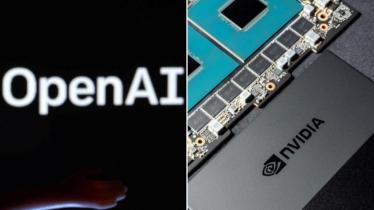As artificial intelligence (AI) and generative AI models gather pace and popularity, global majors like OpenAI and Nvidia are talking local – about the need to focus on India, its data sets, and to build models which will help entrepreneurs, startups, the industry, and end-user consumers.
OpenAI, best-known for the popular ChatGPT model, said on Wednesday that the focus area for the company in India is to provide affordable access to developers as well as consumers of its GPT models. It also said supporting Indian languages will be a priority area for it.
The company said it has got a lot of feedback about its developer services being too high and the need for improvement in the performance of its models on Indian languages.
“GPT-4o is 6x less expensive than the GPT-4 model from eight months ago, while also being better in terms of quality and 2x faster. Not only is intelligence improving, but is also getting more accessible — which is exciting,” Srinivas Narayanan, vice-president at OpenAI, said at the Global IndiaAI Summit 2024, which began on Wednesday.
Nvidia, too, has started discussions with startups and developers in India regarding the compute solutions they are looking for as well as challenges they are facing.
Speaking at the same summit, Mohit Sewak, AI researcher and developer relations, South Asia, Nvidia, said India needs multi-modal AI models that consider diverse Indian cultures and sensitivities, moving away from western-centric models.
According to Sewak, the same will require large-scale, multilingual data sets and synthetic data generation. He said Indian LLMs (large language models) should be multi-modal with voice as an essential element.
“India has around 23 official languages, but a Bharat that I am proud to represent speaks around 10,500 unique dialects across 123 unique languages,” Sewak said, adding, “The largest model that I am aware of can deal with 100 languages.”
According to Open AI’s Narayanan, a decrease in cost for GPT models has helped developers to bring down the expenses for developing new applications. “We improved the quality of GPT-4o on Indic languages many fold. We also improved the tokeniser which cuts the number of tokens used for Indian languages by 3 times on many common languages — which is an additional huge saving in cost,” Narayanan said.
Tokenisation is a fundamental step in LLMs. It is the process of breaking down text into smaller sub-word units known as tokens. OpenAI’s GPT-4o supports multiple capabilities — text, audio, vision, and image and generates combination of text, audio, and image as outputs.
Narayanan said tools like ChatGPT help accelerate startups, and then unlock new ones. “By reducing the cost of intelligence, helping writing code and making computing interfaces conversational, AI can make engineers far more productive, open up opportunities for higher-level problem solving and open up computing for the masses,” he added.
OpenAI is also looking to support the IndiaAI Mission’s, application development initiative to ensure that Indian developers build on the company’s models to deliver societal benefit at scale.
“We look forward to continuing the conversation with the IT ministry, gauging where we may be able to add the most value,” Narayanan said.
Talking about the use cases of AI and companies leveraging OpenAI models in India, Narayanan said agriculture, education, bridging language barriers, healthcare, among others are driving the use.
“Indian startups like Physics Wallah are building on ChatGPT to provide personalised exam-preparation services to millions of students in lower-tier cities,” he said.
Underlining the importance of taking the Indian culture into consideration while building these models, Nvidia’s Sewak said sensitivities in Indians may be different from those of the Western world, on which most LLMs are trained.
Mere translation from one language to another does not solve the problem, he said. If India wants to create a foundation model for Bharat, it is not going to be one single step, he said.
“We are now in an iterative cycle. We’re not talking about one foundation model for India, but a series of hierarchically more complex, more sophisticated foundation models for India,” Sewak noted.
He said it is important to ensure alignment of cultural diversity in India, and Indian sensitivities, with Indian LLMs.
Most LLMs are trained on Western culture and preferences, he said, adding that it is important to use Bharat-specific data to train Indian LLMs.
